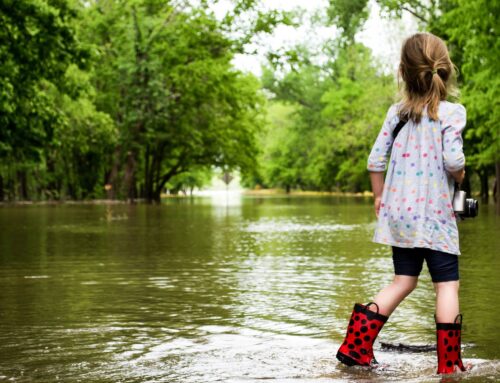Hurricane Helene caused widespread damage across the Gulf Coast. Many local residents who dealt with significant damage from that storm are now waiting for Tropical Storm Milton to see how strong it will become and where it will land. If the worst does happen, knowing how your deductible works is extremely helpful to protect your home and prevent overpayment during this extremely trying time.
How Hurricane Deductibles Work
Hurricane deductibles differ from regular home insurance deductibles, which typically apply to damages caused by perils like fire or theft. Hurricane deductibles typically spring into action only when a storm is officially “named ” a hurricane by the National Hurricane Center (NHC). Generally, they are active from the moment the NHC issues a warning or advisory for Florida and remain in effect for up to 72 hours after the last warning or advisory is lifted.
The deductible itself is typically expressed as a percentage of the home’s insured value, around 2% to 5%. Lower-cost properties may have lower percentage deductibles; extremely expensive properties may even see percentages nearing 10%.
Applying the Deductible for Multiple Hurricanes
If multiple hurricanes strike in the same year, the deductible for each additional hurricane may vary depending on the damage from previous storms:
First Hurricane of the Year: The hurricane deductible is applied in full when you file a claim for the first hurricane. If the total damage from the storm is less than your deductible, you must cover all repair costs out of pocket. However, the amount you spend is credited toward your deductible for future hurricane claims within the same year.
Second or Subsequent Hurricanes: If another hurricane hits within the same calendar year and you file a second claim, the deductible amount remaining from the first storm applies. For instance, if your hurricane deductible is $10,000 and you only used $6,000 to cover repairs from the first storm, you will only need to pay the remaining $4,000 in the event of a second hurricane. Once your hurricane deductible is fully met, any further claims within the same year will be subject to your regular “All Other Perils” (AOP) deductible, often much lower than the hurricane deductible.
This system helps prevent homeowners from facing the full deductible amount for every named storm, but it also means that named storms may require homeowners to pay a separate deductible from what they expect from run-of-the-mill property damage.
What to Keep in Mind When Dealing with Multiple Storms
After multiple hurricanes, the waiving of part of your deductible can be a relief, but there are important details homeowners should keep in mind:
Documenting Damage: After each storm, document everything you can and do not get rid of evidence until insurance has all of the information. Even if the damage from the first hurricane didn’t meet your deductible, filing a claim can help ensure those funds go toward future claims, as well as open up the ability to apply for FEMA loans. Additionally, new damage from a second storm may reveal hidden damage from the first, which could increase the total payout.
Emergency Repairs: Florida law requires homeowners to take reasonable measures and make emergency repairs to prevent further damage to their property after a storm. Notably, these costs are typically included when calculating whether the hurricane deductible has been met. Keep all receipts for emergency repairs along with the evidence of damage.
Exclusions and Limits: While hurricane deductibles cover most wind-related damage, they don’t apply to flooding. Flood damage protection isn’t the default, and Florida residents should be aware that many hurricane-related losses come from storm surges or overland flooding. The disastrous flooding we saw after Helene should be a wake-up call if your current policy is lacking.
Communicating with Your Insurer: Given the complexity of multiple storm claims, always aim to maintain open communication with your insurance provider. Review your policy annually with the help of insurance agents, find the best plan, and move forward with confidence as we hope for a calmer year in 2025.
Insurance isn’t always easy, especially when you have more important things to worry about—like safety as a new storm approaches. Some hurricane deductibles can be large due to the percentage value, so it’s critical to find the right policy. Call Anderson & Associates Insurance Group today to speak to our team and learn how we can help you adjust your policy based on your current deductible and flood coverage needs.










